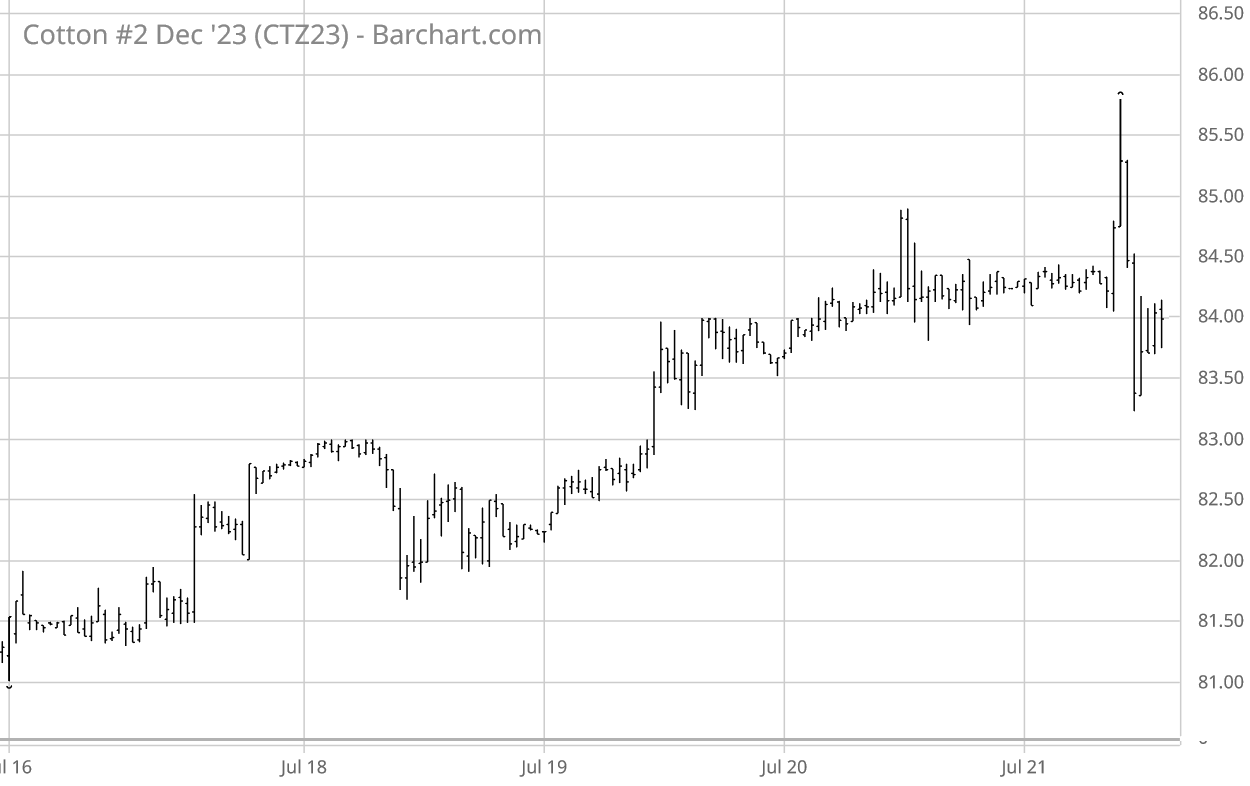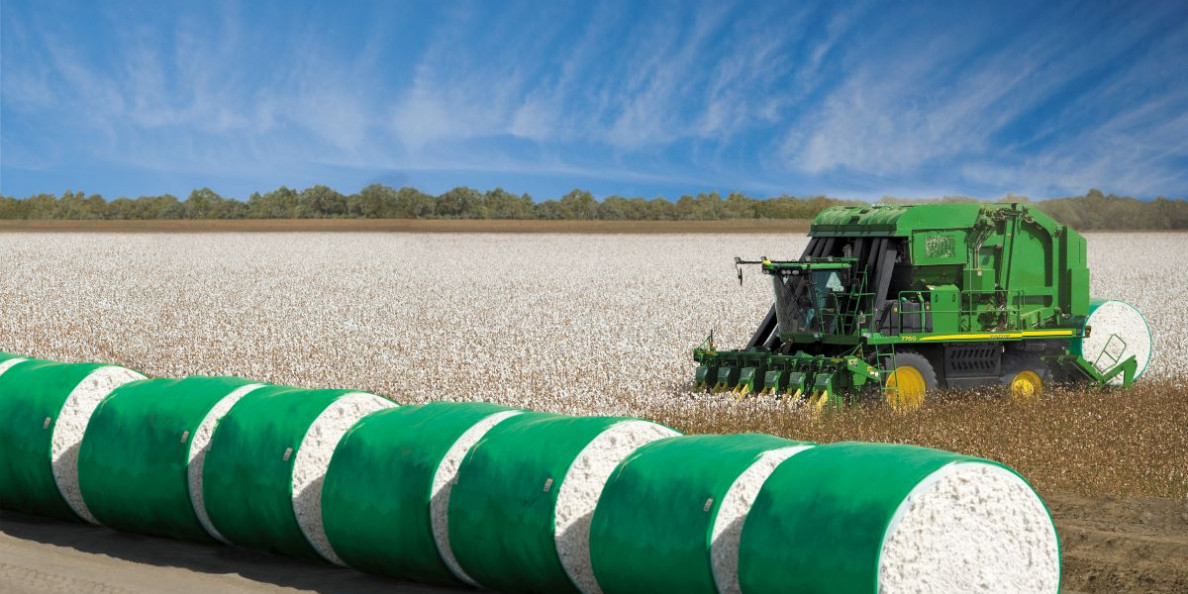For the week ending Friday, July 21, ICE cotton futures trended higher with some notable intraday gyrations (see chart above courtesy of Barchart.com). The Dec’23 contract settled Friday at 84.48 cents per pound, up 17 points on the day. Chinese cotton prices trended higher this week, as did the A-Index of world cotton prices.
In other markets, CBOT corn and soybean futures, along with KC wheat futures, followed similar looking S-patterns with bigger uptrends that peaked by mid-week and then faded. The U.S. dollar index trended higher across the week. Other macro influences (i.e., GDP, inflation, and interest rate policy) remain a potential headwind to longer term cotton demand (although expectations for more hawkish Fed policy were probably lowered by the latest inflation data).

Cotton-specific influences for the week included what seems like regularly scheduled rainfall over the Eastern Cotton Belt. Texas received only a small portion of this, with hot and dry conditions dominating (click here and scroll down for the Texas regional summaries). Looking back, the excess moisture in April/May had mixed effects in northwestern Texas, followed as it was by wind and heat. The resulting production uncertainty is still clouding the U.S. cotton supply/demand and market outcomes.
On the other side of the world, the southwest monsoon rains were relatively early in their complete coverage of India, albeit a bit below average in their accumulation. The hope in India now is for normal July rainfall, while there remain concerns about the uneven distribution of those rains. Pakistan has also suffered crop damage from excessive monsoon rains. Meanwhile in China, the main cotton producing region of Xinjiang has been dealing with damaging temperature extremes.
Through July 13, U.S. export sales continued weak, albeit seasonally normal, while actual export shipments remained below the needed weekly average pace. Of course, the pattern of U.S. cotton sales and shipments can be “lumpy” if major buyers like China step in with large, late-breaking purchases. Meanwhile, USDA’s weekly summary of the U.S. regional markets continued to reflect mixed spot physical trading activity and very light to moderate demand, across the U.S. regions.
ICE cotton futures open interest rose steadily across the week, especially on Wednesday. Considering the higher prices this suggests more outright long positioning across the entire week. But this was not evident early in the week as the regular weekly snapshot of speculative positioning (through Tuesday, July 11) showed minor liquidation of hedge fund longs (-728 contracts) balancing out 719 additional index fund net longs, week over week. Short covering was evident through Tuesday with 3,492 fewer hedge fund shorts than the prior Tuesday.
For more details and data on Old Crop and New Crop fundamentals, plus other near term influences, follow these links (or the drop-down menus above) to those sub-pages.
Source: TAMU

